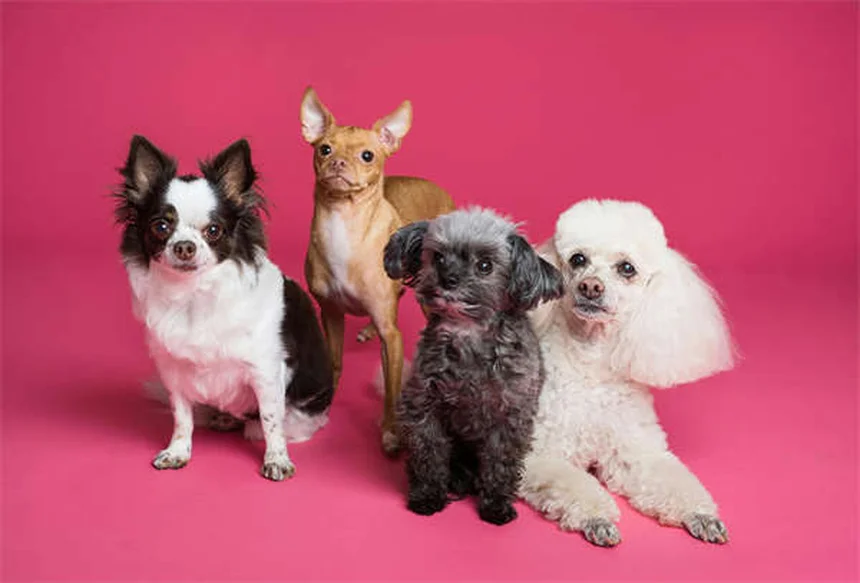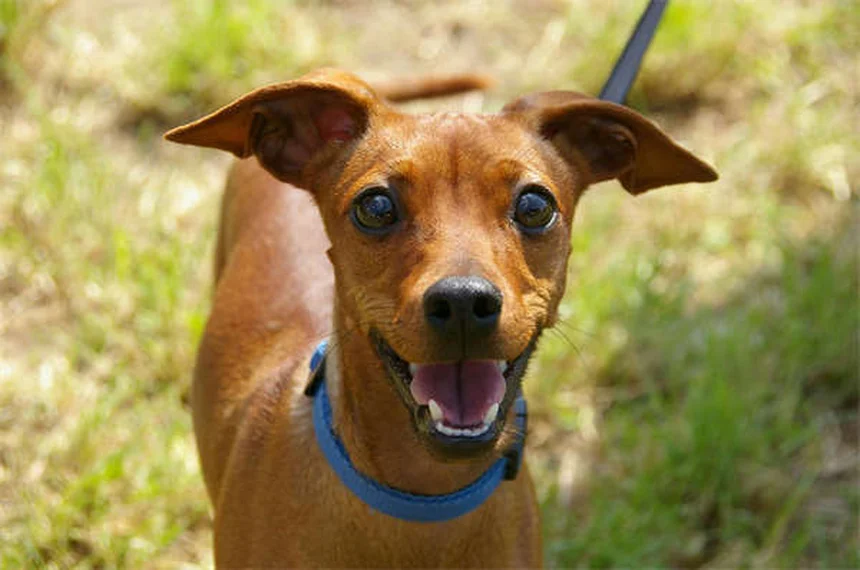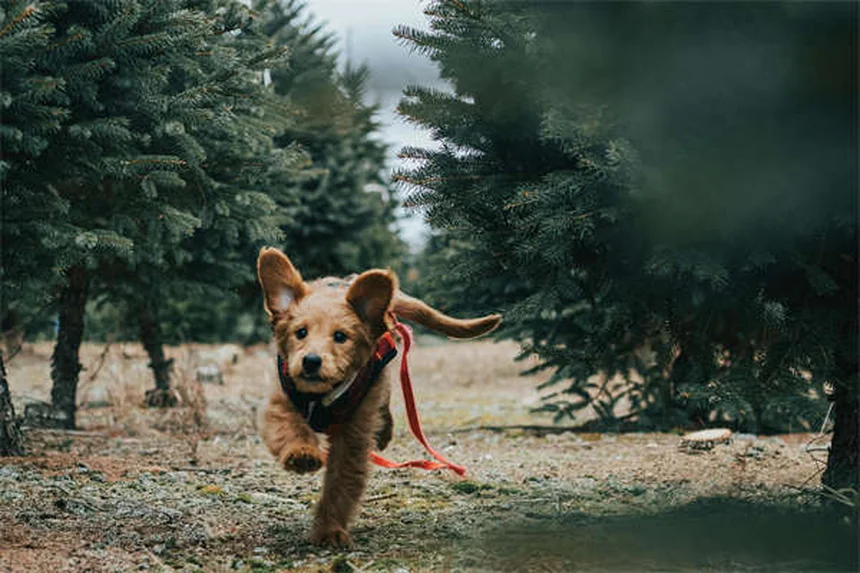Why do dogs growl? The answer might surprise you! Dogs growl for many different reasons, and it's not always about aggression. In fact, growling is completely normal canine communication - like when my neighbor's golden retriever makes happy rumbling sounds during our tug-of-war games! The key is understanding what your dog is trying to tell you through these vocalizations.From playful growls to warning signals, we'll break down the five main reasons dogs growl and show you exactly how to respond. I've worked with hundreds of dogs (including my own growly German Shepherd), and I can tell you that punishing growls is the worst thing you can do. Instead, we'll teach you positive techniques that actually work to build trust and prevent escalation.
E.g. :Best Flea and Tick Treatment for Cats: Keep Your Pet Safe
- 1、Understanding Your Dog's Growling: A Complete Guide
- 2、When Growling Means "Back Off"
- 3、Smart Responses to Growling
- 4、When to Seek Professional Help
- 5、Real-Life Success Stories
- 6、The Science Behind Dog Growls
- 7、Breed-Specific Growling Tendencies
- 8、Growling in Multi-Dog Households
- 9、Cultural Differences in Growl Interpretation
- 10、Fun Ways to Channel Growly Energy
- 11、FAQs
Understanding Your Dog's Growling: A Complete Guide
Hey there fellow dog lovers! Let's talk about one of the most misunderstood aspects of dog communication - growling. I know it can be scary when your furry friend starts making those deep rumbling sounds, but trust me, there's usually more to it than meets the ear.
The Many Faces of Dog Growls
Did you know dogs growl for at least five different reasons? It's not always about aggression. In fact, my neighbor's golden retriever, Max, growls happily every time we play tug-of-war!
Here's a fun fact: puppies as young as 3 weeks old start growling during play. That's right - growling begins before they even have all their baby teeth!
Playtime Growls: The Happy Rumble
When dogs growl during play, you'll notice their whole body says "I'm having fun!" Their tail wags loosely, ears are relaxed, and their facial expression is soft. It's like when we laugh while wrestling with friends.
Just last week at the dog park, I saw two labs growling while playing chase. Their owners initially panicked, but then noticed the dogs were taking turns being "it" and their body language was completely relaxed. That's the beauty of play growls - they're part of normal dog interaction.
When Growling Means "Back Off"
 Photos provided by pixabay
Photos provided by pixabay
The Warning Growl: Reading Canine Body Language
Now let's talk about the growls that do mean "give me space." These come with very different body signals:
| Body Part | Warning Signs |
|---|---|
| Eyes | Hard stare, whale eye (showing whites) |
| Ears | Pinned back or stiffly forward |
| Body | Stiff, leaning forward or crouched low |
I'll never forget when my cousin's dog, Bella, gave this exact warning when a stranger tried to pet her while she was eating. The poor guy didn't read the signs and got nipped. That's why understanding these signals is so crucial.
Resource Guarding: "Mine!" in Dog Language
Ever seen a dog growl over a toy or food? That's resource guarding in action. My friend's beagle, Charlie, turns into a furry dragon when he gets a new bone - hunched over it, growling if anyone comes near.
Here's what's happening in Charlie's mind: "This is my precious! Back off or I'll defend it!" It's not that he's a bad dog - he's just following natural instincts. The key is teaching him that humans approaching his treasures means good things (like extra treats) might come his way.
Smart Responses to Growling
What You Should Do Immediately
When your dog growls, stay calm! I know it's easier said than done - my hands still shake a little when my big guy rumbles at the mailman. But dogs pick up on our energy, so keeping cool helps prevent escalation.
Try this 3-step approach I learned from a professional trainer:
- Make a neutral sound (like a tongue click) to interrupt
- Redirect to a simple command ("watch me" or "sit")
- Reward with high-value treats when they comply
Carry treats everywhere at first. I keep a pouch clipped to my belt - my dog now thinks I'm a walking treat dispenser! But it works wonders for changing his reaction to triggers.
 Photos provided by pixabay
Photos provided by pixabay
The Warning Growl: Reading Canine Body Language
Did you know it takes most dogs about 3 months to fully adjust to a new home? That's why patience is key when working with growling behaviors.
Here's a question I get all the time: "Should I punish my dog for growling?" Absolutely not! Punishing growls is like taking the batteries out of a smoke alarm - the danger is still there, you just won't get warning. Instead, we want to address why the alarm is going off.
Positive reinforcement training builds trust. My dog went from growling at every passing dog to happily checking in with me for treats. It took weeks of consistent work, but now our walks are peaceful (and my treat budget has finally stabilized!).
When to Seek Professional Help
Medical Causes You Shouldn't Ignore
Sudden behavior changes can signal health issues. Just last month, a client's normally sweet pug started growling when touched. Turns out he had an ear infection making him extra sensitive!
Common medical causes of new growling include:
- Arthritis or joint pain
- Dental problems
- Hormonal imbalances
- Neurological conditions
Always rule out health issues first. Your vet can help identify or eliminate medical causes before you start behavioral work.
Finding the Right Trainer
Here's another important question: "How do I choose a good dog trainer?" Look for certifications like KPA or CTC, and avoid anyone who uses shock collars or physical corrections. A great trainer should make learning fun for both you and your dog!
I made the mistake of hiring a "balanced" trainer early on. My dog just became more anxious. When we switched to positive reinforcement methods, it was like night and day. Now he wags his tail during training sessions instead of shrinking away.
Real-Life Success Stories
 Photos provided by pixabay
Photos provided by pixabay
The Warning Growl: Reading Canine Body Language
Let me share how we helped two very different dogs overcome growling issues:
| Dog | Issue | Solution | Result |
|---|---|---|---|
| Rocky (German Shepherd) | Growled at visitors | Desensitization training | Now greets guests politely |
| Luna (Chihuahua mix) | Food bowl guarding | Hand-feeding protocol | Eats calmly around people |
The key in both cases? Consistency and positive reinforcement. Rocky's owners practiced daily with friends ringing the doorbell, while Luna's family hand-fed all her meals for a month. Small steps lead to big changes!
Your Growling Questions Answered
Let's tackle some common concerns I hear from dog owners:
"My dog growls at nothing - is he seeing ghosts?" Probably not! More likely he's hearing something you can't detect, or possibly experiencing discomfort. Dogs have much sharper senses than we do.
"Should I alpha roll my growling dog?" Please don't! This outdated technique often makes dogs more defensive. Imagine if someone pinned you down when you said "back off" - you'd probably escalate too!
Remember, growling is communication. When we listen to what our dogs are telling us, we can help them feel safer and more confident. And that leads to happier lives for both ends of the leash!
The Science Behind Dog Growls
What Researchers Are Discovering
Did you know scientists have actually studied dog growls using spectrograms? These audio graphs show that play growls have completely different sound patterns than warning growls. It's like comparing a friendly "hey!" to an angry "back off!" in human speech.
Researchers at Eötvös Loránd University found something fascinating - dogs can tell the difference between these growl types too! In experiments, dogs reacted differently when hearing play growls versus aggressive growls through speakers. Makes you wonder what else our pups understand that we don't, doesn't it?
The Emotional Brain Behind the Growl
When your dog growls, their amygdala (the emotional center of the brain) lights up like a Christmas tree. But here's the kicker - the exact same brain area activates whether they're growling in play or in warning. The difference comes from what other brain areas join the party.
During play, the prefrontal cortex (the thinking part) keeps things light. But during defensive growls, the hypothalamus (the primal "fight or flight" center) takes over. This explains why you can't just "reason" with a growling dog - their brain literally switches modes!
Breed-Specific Growling Tendencies
Which Breeds Growl Most (And Least)
After working with hundreds of dogs, I've noticed some interesting breed patterns. Northern breeds like Huskies tend to be very vocal in play, while many guardian breeds have deeper, more serious warning growls.
| Breed Group | Play Growl Frequency | Warning Growl Frequency |
|---|---|---|
| Herding Dogs | Medium | Low |
| Terriers | High | Medium |
| Guardian Breeds | Low | High |
But here's the thing - every dog is an individual. I've met golden retrievers with serious guarding tendencies and rottweilers who wouldn't growl if you stepped on their tail. That's why reading your specific dog's signals matters more than breed stereotypes.
Small Dog vs Big Dog Growls
Ever notice how small dogs often seem to growl more? There's actually science behind this! Smaller breeds tend to use growling as an early warning system because they feel more vulnerable. It's like how I talk louder at concerts so my friends can hear me.
Meanwhile, many large breeds stay quiet until they really mean business. A mastiff might not growl until he's truly upset, while a chihuahua gives warning growls when someone just looks at him funny. Size really does shape communication style!
Growling in Multi-Dog Households
The Pack Dynamics of Growling
If you've got multiple dogs, you've probably heard some interesting growl conversations. Dogs actually have different growl "dialects" for communicating with other dogs versus humans. My two labs have this hilarious play growl they only use with each other - it sounds like they're arguing over the last slice of pizza!
Here's a pro tip: pay attention to which dog starts the growling and how the others respond. The initiator often sets the tone - playful growls usually lead to more play, while tense growls can escalate if not managed.
When Growling Becomes a Problem
Growling between housemate dogs isn't always bad - it's often just communication. But you should watch for these red flags:
- Growling over basic resources like water bowls
- One dog consistently growling to control spaces
- Growls that escalate to snaps or fights
I learned this the hard way when my younger dog started guarding the couch from my older one. We had to implement a "no furniture" rule and give each dog their own comfy bed. Problem solved!
Cultural Differences in Growl Interpretation
How Humans Misread Canine Signals
Here's something wild - studies show Americans interpret dog growls differently than people from other cultures! We tend to assume growls are more aggressive than they actually are, while some European cultures are better at distinguishing play growls.
Why does this matter? Because our assumptions shape how we react. If you automatically think "bad dog!" when you hear a growl, you might miss that your pup is actually saying "this is fun!" in dog language.
Historical Perspectives on Growling
Did you know Victorian era dog trainers considered growling a sign of "moral weakness" in dogs? They actually tried to breed it out of some lines! Thankfully, modern science shows us growling is a crucial communication tool - like a canine version of saying "I'm not comfortable."
This historical misunderstanding explains why some old-school trainers still punish growling. But we know better now! As my mentor always says: "A dog who growls is giving you valuable information - don't shoot the messenger!"
Fun Ways to Channel Growly Energy
Games That Satisfy the Growl Urge
For dogs who love to growl in play, try these approved activities:
Tug-of-war with rules: Teach your dog to "drop it" on command so the game stays fun and safe. My dog knows "give" means he'll get an even better toy as a reward!
Puzzle toys that "talk back": Some interactive toys make growly sounds when played with. It's hilarious to watch dogs have "conversations" with these toys!
Turning Growls Into Tricks
You can actually train growling on cue as a fun trick! Start by capturing natural growls during play and marking them with a clicker or "yes!" Then add a cue like "speak your mind."
Just be careful with this one - you don't want to encourage inappropriate growling. But for dogs who already growl during play, it can be a cute way to channel that energy positively. My neighbor's boxer does a hilarious "growly happy dance" on command now!
E.g. :Why Dogs Growl and How to Handle It – American Kennel Club
FAQs
Q: Is it bad if my dog growls during play?
A: Not at all! Play growling is completely normal and actually a sign your dog is having fun. When my dog Max plays with his favorite rope toy, he makes these hilarious grumbly noises while wagging his tail like crazy. The key is watching their body language - loose, wiggly movements and relaxed facial expressions mean it's just play. However, if the growling gets more intense or the body stiffens, it might be time for a break. Always supervise play sessions and know your dog's limits.
Q: Why does my dog suddenly growl when touched?
A: Sudden growling when touched often signals pain or discomfort. Just last month, a client's normally sweet Labrador started growling when petted - turns out he had an ear infection! I always recommend seeing your vet first when new growling behaviors appear. Common medical causes include arthritis, dental problems, or skin irritations. Once health issues are ruled out, we can work on behavior modification with a certified trainer.
Q: How do I stop my dog from growling at strangers?
A: The secret is positive reinforcement training! Here's what worked for my German Shepherd: carry high-value treats on walks and reward your dog before they growl at approaching people. Teach them to "watch you" instead of focusing on strangers. Start at a distance where your dog notices but doesn't react, then gradually decrease the space. It takes patience - we practiced daily for three months - but now my dog happily checks in with me when people walk by instead of growling.
Q: Should I punish my dog for growling?
A: Absolutely not! Punishing growls is like removing the batteries from a smoke alarm - the danger is still there, you just won't get warning. I made this mistake early in my dog training career and learned the hard way that punishment creates more anxiety. Instead, we want to understand why the growling happens and address the root cause. Positive reinforcement builds trust and creates lasting behavior change without damaging your relationship with your dog.
Q: My dog growls over food - is this normal?
A: Resource guarding (growling over food, toys, or prized objects) is a common canine behavior rooted in natural instincts. My friend's beagle Charlie turns into a little dragon when he gets a new bone! The solution isn't punishment, but rather teaching your dog that human presence near their treasures means good things (like extra treats) might come. Start by tossing treats near their bowl while they eat, gradually working closer. For severe cases, consult a professional trainer who specializes in positive reinforcement methods.



Discuss